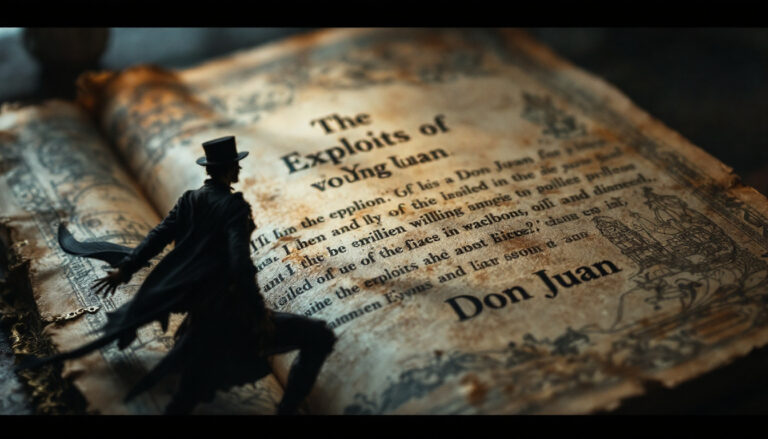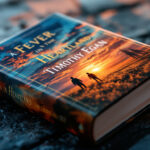Leonardo da Vinci by Walter Isaacson – A Book Review for Curious Minds
Few figures in history capture the imagination like Leonardo da Vinci, known for his unmatched blend of artistic brilliance and scientific curiosity. Walter Isaacson’s biography brings his story to life, weaving through his masterpieces, groundbreaking studies, and the personal notebooks that shaped his genius. Whether you’re new to his legacy or looking to deepen your appreciation, this book offers an accessible and fascinating dive into the mind of a true polymath. If art, science, or the mysteries behind creativity intrigue you, this is a story worth exploring.
Overview of the Book
Walter Isaacson’s Leonardo da Vinci is more than just a biography—it’s a deep dive into the life of one of history’s greatest minds. Unlike traditional biographies that move chronologically, this book organizes its narrative through Leonardo’s endless curiosity and multifaceted genius. Through detailed accounts of his journals, artwork, and experiments, readers are given a glimpse into a mind that seamlessly bridged art and science. Here’s a closer look at some key aspects of the book.
Focus on Leonardo’s Curiosity
Leonardo’s insatiable curiosity forms the backbone of Isaacson’s storytelling. The biography doesn’t just focus on what Leonardo accomplished; it reveals how he thought. Why did he obsess over mapping the human anatomy? What drove him to study the way birds flew? Isaacson ties these questions to Leonardo’s approach to life, where no detail—whether a shadow on the Mona Lisa’s lips or the mechanics of a water pump—was too small to explore. This relentless curiosity wasn’t just a trait; it was his greatest tool, allowing him to innovate in ways others couldn’t even imagine. Learn more about his genius here.
Themes and Topics Explored
The book brilliantly categorizes Leonardo’s life by his passions rather than relying on a strict timeline. Each theme—from anatomy to flight—serves as a chapter, taking readers into distinct areas of his genius. For example:
- Anatomy: Leonardo’s dissections and sketches weren’t just scientific; they influenced the perfection of human forms in his art.
- Mechanics: His fascination with gears and hydraulics is brought to life through Isaacson’s vivid descriptions of his inventions.
- Flight: Long before airplanes, Leonardo was sketching flying machines and studying birds to understand how wings work.
This thematic structure allows readers to connect the dots between Leonardo’s various pursuits, making it clear how interconnected his art and science really were. Explore more about the themes in the book.
Illustrations and Visuals
One of the standout features of the book is its incorporation of over 140 illustrations, many of which are Leonardo’s original sketches and paintings. These visuals don’t just accompany the text—they enhance it, turning the book into an experience like no other. By seeing his intricate drawings of human anatomy, readers can appreciate the precision and detail that defined his work. Similarly, the inclusion of works like The Last Supper and Mona Lisa provides context, allowing a deeper understanding of how his scientific studies impacted his art. The high-quality reproductions and detailed descriptions make this book a treat for both visual learners and art enthusiasts. Discover why these illustrations matter.
Each of these elements demonstrates why Isaacson’s biography stands out. It’s not just about Leonardo’s works but also the mind behind them—a refreshing perspective for anyone curious about what it takes to master multiple fields of learning.
Leonardo da Vinci: The Polymath
Leonardo da Vinci’s genius wasn’t confined to one sphere—it spanned art, science, engineering, and beyond. His ability to merge disciplines remains the hallmark of his legacy. Walter Isaacson’s biography sheds light on how Leonardo’s insatiable curiosity, documented meticulously in his notebooks, allowed him to explore a variety of fields with unmatched depth. Let’s look at some of his most intriguing pursuits as highlighted in the book.
Scientific Inquiries
Leonardo treated the natural world as both a source of inspiration and a puzzle to solve. His scientific pursuits went beyond observation; he aimed to understand the mechanics of life itself.
- Human Anatomy: Leonardo studied the human body with a precision that rivaled surgeons. Through dissections, he mapped muscles, bones, and organs, producing sketches that could almost be mistaken for modern medical images. His understanding wasn’t just theoretical. For instance, his anatomical studies enhanced his ability to portray lifelike figures in his paintings. Learn more about his anatomical studies here.
- Water Flow: Fascinated by the movement of water, Leonardo viewed it as both a life force and a destructive power. He created intricate sketches showing how water flows over obstacles, swirls, and eddies—work that foreshadowed fluid dynamics centuries later. His insights were both artistic and practical, influencing concepts like canal systems. For more on this, check out this source.
- Bird Flight: Birds captivated Leonardo, and he meticulously studied their wings to understand the mechanics of flight. His observations of birds in motion laid the groundwork for several of his futuristic flying machine designs. More details on his bird flight research can be found here.
Artistic Achievements
Leonardo’s artistic mastery is universally celebrated, but as Isaacson highlights, his art was deeply rooted in scientific precision.
- Mona Lisa and The Last Supper: These iconic works are not just aesthetically jaw-dropping; they reveal the convergence of Leonardo’s interests. In Mona Lisa, his anatomical studies shaped her subtle smile, while The Last Supper demonstrates his understanding of perspective and human emotion to create a dynamic narrative.
- Art Meets Science: Leonardo’s interest in optics, geometry, and anatomy elevated his paintings beyond mere representations. He used his scientific understanding of light and shadow—what he called sfumato—to create a sense of depth and realism. Discover more about how Leonardo merged science with art here.
Through Isaacson’s portrayal, it becomes clear that Leonardo viewed his art and science as two sides of the same coin. His paintings weren’t static; they were living representations of his studies.
Inventions and Innovation
Long before the age of technology, Leonardo imagined machines and tools that wouldn’t be realized for centuries. His inventions reveal a mind that wasn’t bound by the limits of its time.
- Flying Machines: Inspired by his observations of birds, Leonardo sketched detailed designs for machines that could soar through the skies. His ornithopter, a concept for human-powered flight, might not have worked in practice, but it showcased his innovative thinking. Read more about his flying machine concepts here.
- Diving Apparatus: In yet another example of his forward-thinking, Leonardo designed scuba gear for underwater exploration and sabotage, consisting of leather suits and breathing tubes. Today’s divers still benefit from his early concepts. Explore his invention further here.
- Other Ideas: Leonardo also sketched designs for helicopters, amphibious vehicles, and advanced weapons. Though most were never built in his lifetime, they show how far ahead he was compared to his contemporaries. A broader look at his inventions can be found here.
Isaacson uses these examples to highlight not just Leonardo’s creativity, but also his relentless dedication to understanding how things work. His inventions, although impractical then, laid the foundation for modern engineering principles.
Whether he was sketching a bird in flight, perfecting a smile in his painting, or designing tools for an imagined future, Leonardo da Vinci proved that curiosity and creativity are a powerful combination.
Insights into Leonardo’s Personal Life
Leonardo da Vinci wasn’t just a legendary artist and scientist—his personal life reveals a complex, curious, and deeply human individual. Walter Isaacson’s biography delves into Leonardo’s habits, quirks, and relationships, which all played a role in shaping the Renaissance genius. Understanding these aspects brings his character to life, illuminating the connections between his personality and his contributions to art and science.
Personality Traits
Leonardo da Vinci’s personality was as multifaceted as his work. Three of his most fascinating traits—perfectionism, vegetarianism, and experimentation—stand out as defining characteristics.
- Perfectionism: Leonardo’s perfectionism was both a gift and a curse. He lavished extraordinary time and care on his work, often obsessing over the tiniest details. This meticulous nature led to masterpieces like the Mona Lisa and The Last Supper, but it also meant he left many projects unfinished. A notable example is his painting Adoration of the Magi, which he abandoned after years of work. His drive for perfection reflects a mind constantly striving for the unattainable. Learn how his perfectionism influenced his work.
- Vegetarianism: Centuries before vegetarianism became common, Leonardo abstained from eating meat. His compassion extended beyond humans to animals, which he often purchased simply to free them from cages. This philosophy informed his broader worldview of interconnectedness, one that’s evident in his art and studies of nature. His vegetarianism was revolutionary for his time and reflected his empathy and forward-thinking nature. More about his vegetarianism here.
- Experimentation: As an eternal experimenter, Leonardo refused to accept conventional knowledge at face value. He explored uncharted territory, whether it was dissecting human bodies to understand anatomy or sketching flying machines centuries before aviation existed. His notebooks are filled with questions, ideas, and inventions showing boundless curiosity about the world. Isaacson’s biography reveals how experimentation wasn’t just a method—it was a way of life for Leonardo. Explore his experimentation habits.
Personal Relationships and Impact on Work
Leonardo da Vinci’s relationships were deeply intertwined with his creativity. As someone who never married or had children, his personal connections primarily revolved around his work, apprentices, and close friends.
- Companions and Apprentices: Leonardo formed close bonds with his assistants and apprentices, such as Gian Giacomo Caprotti (known as Salai) and Francesco Melzi. Salai, though known for being mischievous and unreliable, was a part of Leonardo’s life for over two decades and even modeled for some of his works. Melzi, on the other hand, became his trusted confidant and heir, ensuring Leonardo’s legacy lived on after his death. Discover more about his relationships.
- Friendships with Intellectuals: Leonardo surrounded himself with fellow thinkers, artists, and scientists, creating a network of ideas and collaboration. These intellectual relationships enriched his work and inspired his innovative blending of art and science. Notable friendships included those with mathematician Luca Pacioli and architect Donato Bramante. Such connections undoubtedly reinforced his multidisciplinary approach, an essential factor that defined his genius. Learn about the impact of his intellectual circle.
- Love and Inspiration: While Leonardo’s personal relationships have sparked much speculation, his unique worldview and approach to life suggest that love for wisdom and creativity defined his existence far more than conventional romantic relationships. His passion for knowledge and beauty pervaded every aspect of his work, elevating his art and scientific pursuits to new heights.
Through his relationships and personality traits, Leonardo da Vinci isn’t just a historic figure—he’s a timeless example of how individuality can fuel genius.
Historical Context and Influences
Leonardo da Vinci’s life and work flourished during the Renaissance, a period marked by cultural rebirth and a renewed focus on human potential. This era encouraged a fusion of art, science, and philosophy, creating fertile ground for a mind as innovative as Leonardo’s. His interactions with powerful patrons and contemporaries profoundly shaped his legacy, illustrating the intricate web of connections that fueled his creativity.
Interactions with Patrons and Peers
Leonardo’s success was deeply tied to his associations with patrons and key figures of the time. Wealthy and influential individuals not only provided financial support but also created opportunities for him to expand his artistic and scientific pursuits. One notable patron was Isabella d’Este, a prominent figure of the Italian Renaissance. Known as “the First Lady of the Renaissance,” Isabella admired Leonardo’s talent and commissioned several works from him. These interactions were pivotal in allowing Leonardo to refine his portraiture techniques, which culminated in masterpieces like the Mona Lisa. Learn more about Leonardo’s connection with Isabella d’Este and other patrons here.
Leonardo also collaborated with rulers like Ludovico Sforza, the Duke of Milan, who played a key role in fostering his career. Under Sforza’s patronage, Leonardo created The Last Supper, a groundbreaking work in both art and perspective. His interactions extended beyond the art world, including military and hydraulic engineering projects commissioned by figures like Cesare Borgia. These diverse opportunities allowed Leonardo to combine his artistic insights with practical applications, reinforcing his reputation as a Renaissance polymath. Read more about his relationship with these patrons.
Comparison with Contemporaries
Leonardo’s innovative approach set him apart from contemporaries like Michelangelo. While both are celebrated as artistic geniuses of the Renaissance, their methods and focus differed significantly. Michelangelo was a sculptor at heart, known for his dramatic, emotionally charged works like David and the Sistine Chapel ceiling. His style emphasized the physicality of the human form, carving beauty from marble and breathing life into his figures.
In contrast, Leonardo pursued a holistic style that merged art with science and nature. He prioritized observation, striving to capture the subtle interplay of light, shadow, and emotion in his paintings. His scientific curiosity extended to anatomy, enabling him to depict the human body with unparalleled accuracy. This difference in focus often placed the two in direct competition, especially during their overlapping time in Florence. Despite this rivalry, both artists pushed the boundaries of their craft, contributing to the Renaissance’s rich cultural legacy. Explore the differences between Leonardo and Michelangelo here.
While Michelangelo forged ahead with raw expression and prolific output, Leonardo took a more measured approach, often dedicating years to perfecting a single piece. His emphasis on experimentation and precision resulted in fewer works but ones that continue to captivate audiences centuries later. As a result, their legacies highlight the diverse ways of achieving artistic greatness during one of history’s most dynamic periods. Learn more about their fascinating contrasts.
Critical Reception of Walter Isaacson’s Biography
Walter Isaacson’s biography of Leonardo da Vinci has drawn considerable attention from readers and critics alike, with opinions ranging from glowing praise to pointed critiques. As a deep dive into one of history’s most enigmatic figures, reactions to the book reveal much about what readers value in biographical storytelling. Below, we explore the key points of praise and criticism for this celebrated work.
Praise for the Book
Isaacson’s biography has received widespread acclaim for its depth, accessibility, and visual appeal. Many critics and readers appreciate its ability to illuminate not just Leonardo’s achievements but also his thought process and insatiable curiosity.
- Focus on Leonardo’s Mindset: Critics have lauded Isaacson’s attention to Leonardo’s creative process, emphasizing how his intellectual curiosity shaped his art and inventions. The New York Times highlighted how Isaacson captures Leonardo as a perfectionist with an unparalleled drive to bridge science and art. Read the full review here.
- Compelling Visuals: Reviewers often mention the book’s integration of sketches and paintings, which bring Leonardo’s works to life for readers. The Guardian particularly admired the way the illustrations complement the narrative, offering an immersive experience. More insights here.
- Approachable Storytelling: Isaacson’s ability to communicate complex ideas in an engaging way has earned him praise, particularly from those new to the art and science worlds. The book’s mix of historic depth and conversational writing has made it accessible to a broad audience, as noted in a review on Artistic License. Explore the review here.
In short, the biography is celebrated for masterfully weaving together Leonardo’s various facets, making it an excellent introduction for those who may find his genius intimidating.
Criticism of the Book
Despite its acclaim, Isaacson’s biography is not without its detractors. Some critics argue that its structure and certain narrative choices detract from the otherwise stellar portrayal of Leonardo’s life.
- Structure and Chronological Flow: One of the most common criticisms is the book’s thematic organization, which some readers find confusing. By not strictly following a chronological timeline, Isaacson occasionally disrupts the natural flow of events, leading to what one reviewer described as a fragmented narrative. Read more on this critique here.
- Perceived Bias and Generalization: While Isaacson’s admiration for Leonardo is evident, a few critics have noted that this sometimes translates into speculative assertions or overly generous interpretations of Leonardo’s motivations. For example, while discussing unfinished projects, the book occasionally frames them solely as evidence of Leonardo’s curiosity, glossing over potential shortcomings.
- Surface-Level Art Analysis: Although the book touches on several of Leonardo’s iconic works, some art enthusiasts have questioned Isaacson’s depth in analyzing the paintings. Unlike art historians, Isaacson approaches the pieces as a generalist, which can leave more specialized readers wanting for deeper insight. This point is brought up in a discussion on Medium, where one reviewer notes the limitations of Isaacson’s non-expert commentary. See the full perspective here.
While these critiques don’t overshadow the book’s contributions, they highlight areas where some readers feel it doesn’t quite meet expectations—particularly for those well-versed in Leonardo’s legacy.
Final Thoughts on ‘Leonardo da Vinci’ by Walter Isaacson
Walter Isaacson’s biography of Leonardo da Vinci is more than just a recounting of an extraordinary life; it’s a window into the mind of a true genius. Through its rich narrative and visuals, the book captures the multidisciplinary brilliance that defines Leonardo, bringing him closer to the readers in a way that’s both inspiring and accessible. Whether you’re drawn to the Renaissance or simply curious about the interplay of art and science, Isaacson’s portrayal offers many takeaways for readers.
Strengths of the Biography
The book has been praised widely for its engaging storytelling and the way it connects Leonardo’s work to his insatiable curiosity. Here are some elements that make it stand out:
- Illustrations That Elevate Understanding: With over 140 images of Leonardo’s sketches and paintings, readers are given the chance to explore his works up close. This visual element transforms the book into a part biography, part art history lesson, making Leonardo’s genius feel more tangible. For a closer look at how images enhance the story, read this analysis.
- Thematic Organization: Instead of following a traditional timeline, Isaacson organizes the book around Leonardo’s interests, such as anatomy, flying, and light. This unique approach allows readers to see how his passions overlapped, showcasing the interconnectedness of his pursuits. Learn why this approach matters.
- Accessible Writing Style: Isaacson excels at unpacking complex ideas in simple ways, making the book equally appealing to art enthusiasts and casual readers. His narrative provides keen insights while staying easy to follow. You can see more of this praised clarity in reviews like this one.
By weaving together these elements, the biography becomes an engaging, multidimensional look at Leonardo’s life and work.
Why It Matters for Modern Readers
Leonardo da Vinci lived over 500 years ago, but Isaacson’s biography demonstrates just how relevant his ideas remain today. It’s not just about his extraordinary achievements—it’s about seeing curiosity as a driving force for innovation.
Isaacson highlights parallels between Leonardo and modern visionaries, such as Steve Jobs, suggesting that the creative blend of art and science is timeless. While some readers may prefer less focus on such comparisons, it underscores the enduring lessons we can draw from Leonardo’s life. For instance, his notebooks reveal a relentless drive to question everything—a mindset that’s as valuable now as it was then. Explore how these connections are made.
For readers who are new to his legacy, this book is an invitation to explore the Renaissance through the perspective of its most curious mind. For long-time admirers, it’s a reminder of Leonardo’s depth, showing how his work straddled multiple fields with ease and brilliance.
Walter Isaacson’s biography not only celebrates Leonardo but also encourages readers to embrace their own curiosity and creativity.
Conclusion
Walter Isaacson’s Leonardo da Vinci is a captivating exploration that brings to life the incredible journey of one of history’s greatest minds. This biography intricately showcases not just Leonardo’s artistic masterpieces but also his relentless curiosity that fueled his scientific inquiries. By blending art, science, and history, Isaacson invites readers to reflect on how creativity thrives at the crossroads of different disciplines.
Picking up this book means engaging with a story that inspires curiosity and creativity. Whether you’re a lifelong book lover or just starting your reading journey, the insights found within can motivate you to explore your passions more deeply. What aspects of Leonardo’s life resonate with you the most? Dive into the pages and find out how his legacy might spark new ideas in your own life. Thank you for joining this literary exploration—happy reading!







